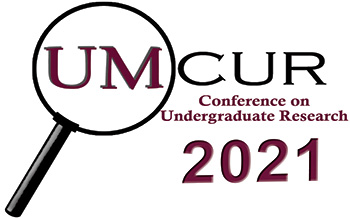Project Type
Presentation
Faculty Mentor’s Full Name
Tobin Miller Shearer
Faculty Mentor’s Department
History/African American Studies
Abstract / Artist's Statement
The traditional narrative of the civil rights movement focuses on the South, the influential rights organizations that drew national attention, and the men who led these organizations. It also presupposes nonviolence as the central organizing principle. Consequently, this narrative often ignores important actions and actors that fall outside this limited purview, and our understanding of the movement suffers as a result. My research adds nuance and granular detail to the broad Black freedom struggle. I embarked on a “local studies” examination of Chicago and have investigated two topics: school segregation and housing segregation.
I reached several interpretive conclusions about Chicago. Most importantly, most actions in Chicago were not nonviolent. The traditional narrative’s tendency to focus on the sharp divide between nonviolent actors and others who advocated armed resistance obscures the fact that most of what occurred in the movement was really neither—it was unviolent. It also obscures the fact that all resistance was toward common goals. In light of these revelations, I have developed an interpretive framework called the resistance continuum. This new concept allows one to understand more intuitively that all movement actions were fundamentally resistance to oppression rather than competing acts from antithetical factions. Moreover, one can more easily explain how purported dogmatists vacillated and sometimes found cause to welcome actions antithetical to their ostensible philosophy. These actors sought only to advance their cause, which occasionally meant sliding along the continuum.
I immersed myself in secondary source literature to get a firm sense of the historiography. I subsequently focused on Chicago newspapers to provide the research base. This project is significant because it will add important depth to the history of the Black freedom struggle. Moreover, I am hopeful that the development of the “resistance continuum” framework will guide future historical study by inviting investigation of the rich space between nonviolent and armed resistance and illuminate the cooperation that occurred in the movement.
Category
Humanities
Time for Radical Action: The Black Grassroots Freedom Struggle in America's Second City in the Mid-1960s
The traditional narrative of the civil rights movement focuses on the South, the influential rights organizations that drew national attention, and the men who led these organizations. It also presupposes nonviolence as the central organizing principle. Consequently, this narrative often ignores important actions and actors that fall outside this limited purview, and our understanding of the movement suffers as a result. My research adds nuance and granular detail to the broad Black freedom struggle. I embarked on a “local studies” examination of Chicago and have investigated two topics: school segregation and housing segregation.
I reached several interpretive conclusions about Chicago. Most importantly, most actions in Chicago were not nonviolent. The traditional narrative’s tendency to focus on the sharp divide between nonviolent actors and others who advocated armed resistance obscures the fact that most of what occurred in the movement was really neither—it was unviolent. It also obscures the fact that all resistance was toward common goals. In light of these revelations, I have developed an interpretive framework called the resistance continuum. This new concept allows one to understand more intuitively that all movement actions were fundamentally resistance to oppression rather than competing acts from antithetical factions. Moreover, one can more easily explain how purported dogmatists vacillated and sometimes found cause to welcome actions antithetical to their ostensible philosophy. These actors sought only to advance their cause, which occasionally meant sliding along the continuum.
I immersed myself in secondary source literature to get a firm sense of the historiography. I subsequently focused on Chicago newspapers to provide the research base. This project is significant because it will add important depth to the history of the Black freedom struggle. Moreover, I am hopeful that the development of the “resistance continuum” framework will guide future historical study by inviting investigation of the rich space between nonviolent and armed resistance and illuminate the cooperation that occurred in the movement.
